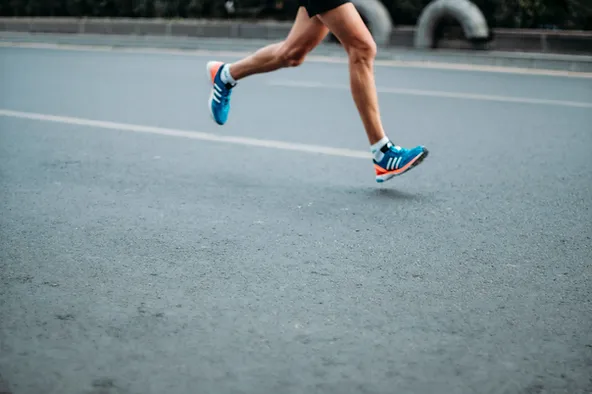Here at Align Health Collective we treat a number of sport related injuries, ranging from ankle sprains to knee pain. However, one of the most common injuries seen in sport is a hamstring strain. The hamstring muscle group consists of three separate muscles: Biceps Femoris (short and long heads), Semitendinosus and Semimembranosus. This muscle group is located at the back of the thigh and is responsible for extending the hip and flexing the knee.
Hamstring injuries usually occur after sudden, explosive movements such as sprinting or jumping. Muscle overload is the main cause of this, and can happen when the muscle is stretched beyond its capacity or challenged with a sudden load. Hamstring strains usually occur when the muscle eccentrically contacts (extending a muscle while it is loaded), which happens in the swing phase of running. Risk factors for this increased load include a muscle imbalance between the hamstring muscle group and the quadricep muscle group, sudden change in direction, increasing age of athlete as well as previous hamstring injury.
Hamstring strains are graded 1, 2 or 3 depending on severity.
Grade 1:
You may have tightness at the back of your thigh, however you are still able to walk normally. This is a mild strain of a small amount of muscle fibres and there is usually no loss of muscular strength or flexibility.
Grade 2:
This involves a partial tear of one of the hamstring muscles. Muscular strength and flexibility is reduced and pain is more immediate and severe than that of a grade 1. Bending the knee against resistance will cause pain and limping is likely during walking.
Grade 3:
This is a severe or complete rupture of the muscle and there will be a sudden, sharp pain felt at the back of the thigh. It will not be possible to walk without experiencing pain, and swelling and bruising will appear within 24 hours.
Regardless of the grade, the immediate treatment for a hamstring injury consists of the RICE (Rest, Ice, Compression and Elevation) protocol. Timeframes for return to sport vary depending on the severity of the strain, however as a general guideline Grade 1 strains should be rested for 2-4 weeks, Grade 2 strains for 1-2 months and Grade 3 strains for up to 3 months (Sports Medicine Australia). There are several treatment tools available to us in the clinic to help speed recovery, including shockwave therapy and dry needling. We are also able to write you up a personalised return to sport program with specific strengthening and conditioning exercises.
If you are experiencing a hamstring strain, or other sport related injury please don’t hesitate to contact the clinic to book an appointment online, or over the phone with one of our specially trained physiotherapists or podiatrists in kew or oakleigh. You can book an appointment online with one of our podiatrists or physiotherapist at www.alignhc.com.au or call us on (03) 9853 7836.

